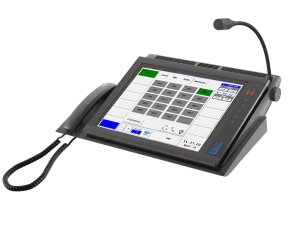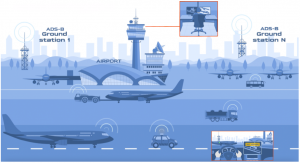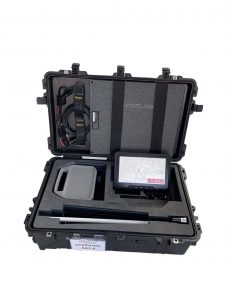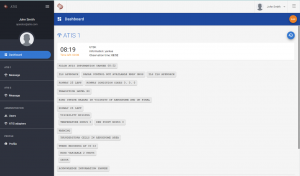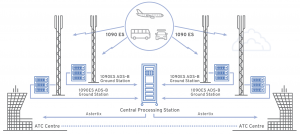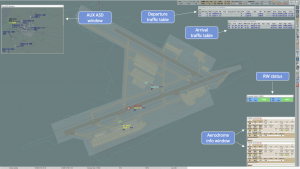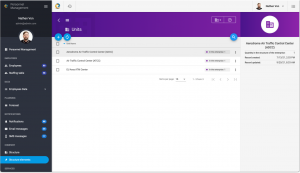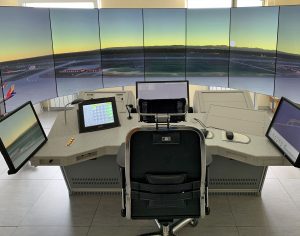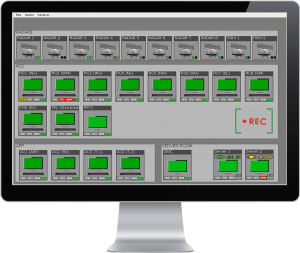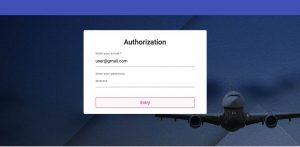Voice Communication Control System (VCCS)
| Company | Ansart |
|---|
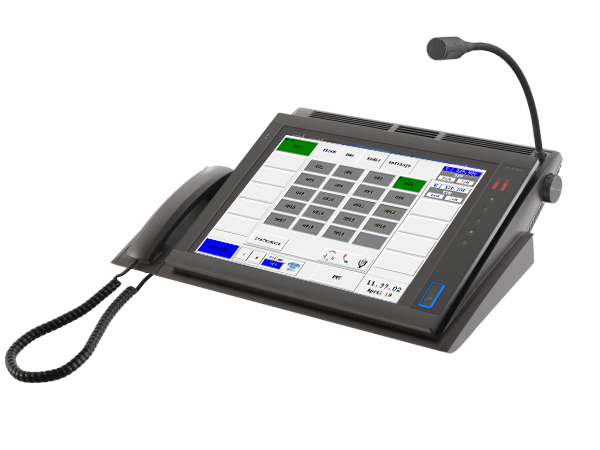
Images
Purpose
The ANSART voice communication control system (VCCS) is a state-of-the-art fully digital, decentralized and extendable product, compliant with International and European Standards, Regulations, Specifications, designed for processing, switching and interfacing voice data.
System provides air-ground and ground- ground communications and is intended for all types of ATS Units (ACC, APP, TWR, MIL, FMP, etc.).
The system’s scalability and configurability allow its fast adaptation, upgrade and extension, thus making it tailorable to specific customer requirements and suitable for ATC centers of any capacity, ATC training facilities, as well as other companies and enterprises wherever voice communications are required.
System capabilities and features
- 24/7 Operation: Designed for continuous operation (24 hours a day, 365 days a year).
- Zero interference other equipment.
- Stay safe! Always! Protected against electromagnetic interference in the electromagnetic environment of an airport.
- Vast number of telephone channels – up to 1024.
- Expandable number of radio stations – up to 255 pairs main/standby.
- Multitasking capabilities: The number of radio channels available for simultaneous selection at the working position – up to 12
- State of the art communication quality and speech intelligibility via speakerphone – above 95%.
- Friendly for the operator: Easy and comfortable to use UI
- frequency range: 300-3400 Hz.
- frequency characteristic nonlinearity: +/- 3 dB maximum.
- crosstalk between independent dialogs – at least 70 dB.
- analogue-to-digital conversion is pulse code modulation (PCM) in accordance with recommendations G.703, G.704, G.711 ITU-T.
- types of communication:
- bilateral radio communication in VHF and UHF range between unified ATC and aircraft crew and bilateral radio communication (ground to ground) between stationary and mobile objects;
- interception of radio exchange between contiguous ATCO points and radio channels;
- internal intercom phone communication of system users;
- internal intercom phone communication of system with subscribers (on cabled physical lines);
- external phone communication with remote interacting objects (on leased toll communication channels);
- non-fast-acting telephone communication via the switching equipment of the voice communication system with the systems subscribers with whom there is no direct access;
- non-fast-acting telephone communication via public switched telephone networks and private telephone networks.
- integrated control of radio, telephone and intercom operations using one touch screen panel.
- transmitting at the same time on more than one radio channel
- receiver voting function (Best Signal Selection)
- automatic transmitter selection function.
- interception of radio exchange between contiguous ATCO points and radio channels.
- incoming calls queuing and selective call pick-up.
- telephone service functions, such as call hold, transfer, call interception, conference, etc.
- selective calling (SELCAL).
- output of all kinds of voice data for registration on external recording equipment.
- advanced control and monitoring functions
- Fast reconfiguration based on CWP roles;
- monitoring and configuration of working positions;
- configuration management servers;
- immediate alarm indication;
- dynamic online re-sectoring;
- event logging;
- graphic presentation with structured layout.
- supported Interfaces:
- ED-137B and ED137C VoIP for ATM for phone and radio communications;
- Radio Channels (VHF, UHF, HF)
- FXS, FXO;
- ISDN Basic Rate Interface;
- ISDN Primary Rate Interface;
- LB, CB;
- DTMF Q.23;
- Analogue ATS MFC-R2;
- Digital ATS-QSIG;
- ATS No.5.
System structure
System architecture based on the “one line – one processor” principle to ensure highest system reliability and fault tolerance.
The system has been developed using cutting edge technology in both software and hardware and built according to the module principle that consists of sets of unified, interchangeable components. Identical software is installed on all workstations, role assignment of each station is defined exclusively on current settings
Equipment of the VCCS system is functionally divided into the following groups:
- workstation equipment.
- interface equipment.
- data exchange medium equipment.
- technical control and monitoring equipment.
Workstation equipment is located on users’ work stations and provides the functioning of VCCS’s voice terminal. Microphone, headsets and speakers are used as means of communication. Touch screen monitor is used as a principle device for control. The touch screen provides indication, command input for the control of radio communication and phone communication, and also WSE user configuration and other service functions
The interface equipment, the data exchange medium equipment. VCCS workstations and the technical control and monitoring workstation are interconnected on a dual LAN.
VCCS provides full redundancy for all its components why here is no need to completely switch off the system for maintenance.
In case the central equipment of the system is switched off, all configuration settings and parameters will be saved and will return after switching on.
System components
- VCCS central equipment cabinet.
- VCCS user workstations.
- VCCS technical control and monitoring workstation.
Note – The quantity of the equipment components as well as functionality of the workstations is determined by the needs of each user.
Compliance
- EU: Regulation (EU) 2018/1139, Regulation (EU) 1079/2012.
- ICAO: Annex 10, Annex 11, Doc 9804
- EU directive: 2014/30/EU, 2014/35/EU, 2012/19/EU, 2011/65/EU
- EUROCAE: ED-137B, ED-137B, ED-138.
- ETSI: ES 201 235, EN 300 403.
- EUROCONTROL: SIP v ATS-QSIG Interworking Gateway Specification, SIP v ATS-R2 Interworking Gateway Specification.

